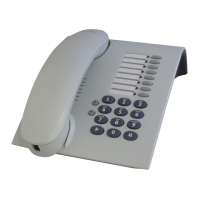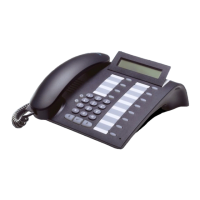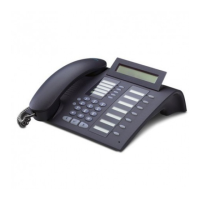Learning About Your Phone 9
Table 3 explains the meanings of the various tones.
Open Listening and Hands-
Free Conversations
Open listening means that people other than the caller himself
can listen to the conversation. To initiate open listening, the
caller presses the SPEAKER key. This will transmit the called
party’s voice directly through the speaker (see Figure 1 on
page 6). However, if the phone does not have a microphone,
the caller must continue to use the handset to talk to the called
party.
Hands-free means that the caller initiates open listening on a
phone that has a microphone. In this case, the caller can hang
up after pressing the SPEAKER key. The called party will be
heard through the speaker, and the caller will speak into the
microphone (see Figure 1 on page 6) and thus be heard by the
called party.
• The Basic phone does not have a microphone and
therefore supports open listening only. It does not support
hands-free conversations.
Table 3. Tones and Their Meaning
Tone Meaning
Dial tone You can make a call or
invoke a feature.
Busy tone The party you called is on
the phone.
Fast busy tone Invalid call.
One tone every 20 seconds Internal call waiting.
Two short tones every 20
seconds
External call waiting.
Three short tones
(confirmation tone)
A feature has been
successfully activated.
Three short tones followed
by dial tone
Additional input required,
for example a PIN.
Wavering (error) tone Invalid feature request.

